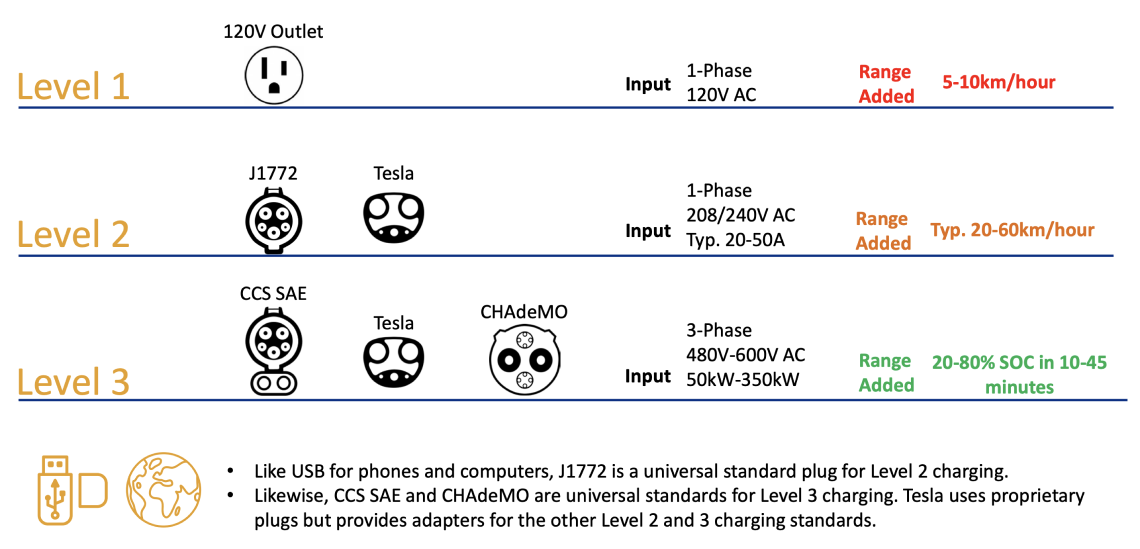Benefits of EV
Electric vehicles confer many advantages over conventional internal combustion engine vehicles. The market is constantly growing and expanding in options and vehicle types, sizes, and features. Transportation accounts for a large proportion of global greenhouse gas emissions which is why many automotive manufacturers have committed to increasing their market offerings of electric vehicles.
Why go electric?
-

CLEAN ENERGY & HIGH PERFORMANCE
- When charged on Alberta’s grid, an EV emits about 50% to 60% less CO2e than the same class ICE vehicle.
- Alberta will be fully transitioned from coal-powered electricity by the end of 2023.
- Renewables are increasingly becoming part of Alberta’s electricity mix and the government has a target of 30% renewables by 2030.
-

CHARGING LOCATIONS
- High speed charging is available in most high traffic corridors of Alberta though some gaps still exist. Check out our charging stations page for more information.
- Charging at home and waking up to a full battery is one of the greatest value propositions for going electric.
- Apps for finding charging stations are available.
-

TOTAL COST OF OWNERSHIP
- Maintenance costs are lower. EVs don’t have spark plugs, a transmission, motor oil, a gas tank or pistons.
- EVs have around 30 moving parts. Internal combustion vehicles (ICE) have more than 150. EVs have less things to go wrong with them.
- In Alberta, costs of electricity compared to gasoline translates to roughly an 80% savings. EVs can cost less to operate compared to a gasoline or diesel vehicle.
-

COLD WEATHER PERFORMANCE
- Lower centre of gravity, electric traction and braking combine for more stable performance.
- Instant heat for cabin occupants. No need to wait for the motor to warm up.
- While cold weather can reduce range by up to 40%, they still perform within the 60% available.
What's it like owning an electric vehicle? - part I
We ask Ed and Rhonda if they could ever go back after purchasing their third electric vehicle.
What's it like owning an electric vehicle? - part II
Take a ride with Carol in her EV!
CHARGING AN ELECTRIC VEHICLE
-
Level 1
Trickle top up. All electric vehicles (EV) plug into a standard wall outlet. However, with just 120V this is the slowest form of charging, but it is a convenient solution and may be sufficient for shorter day to day driving.
-
Level 2
Slow and steady. Fully recharge overnight or at work. All electric vehicles (EV) can plug into level 2 chargers. They are the most common public chargers and would be the type of charger you’d install at home. They require 240V or 208V, similar to your dryer and can deliver a full charge in 4 to 12 hours.
-
Level 3
Stop N’ Go. Quick and powerful. Get on your way. Most electric vehicles (EV) can plug into fast chargers, or “DCFCs”. They are the quickest form of charging, getting you back on the road in less than an hour. They are found along major travel routes, at community gathering locations and are usually pay-per-use. They have one or both of the “CCS SAE” or “CHAdeMO” plugs shown below.
